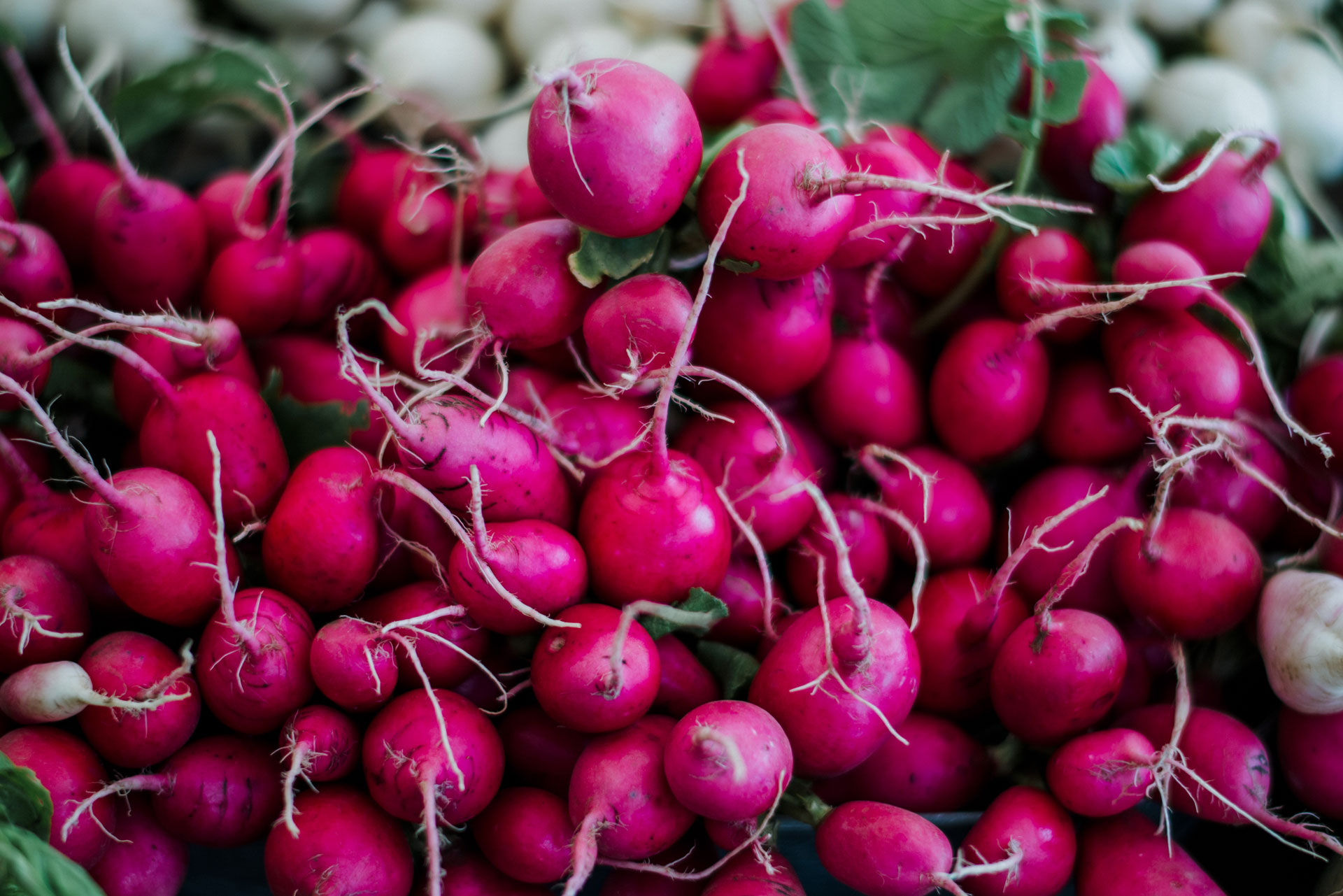Yes, radishes are popular! We witnessed their popularity first-hand last summer.
As you may or may not know, we are starting a market farm this year (2021). Since we had started to plan last summer, we did some farmer’s market recon in 2020.
This entailed heading out to a couple of local farmer’s markets and observing who was there, what they were selling, what people were buying, and so on.
What I was thoroughly surprised and amazed at were the amounts of radishes being produced and flying off the stand.
Seriously! There was one particular grower that had a whole table full of radishes on display and more stored under his table and he was refilling his radish display every chance he could get.
We even overheard people at the farmer’s market saying how much they loved radishes.
I had no idea radishes were so popular until then.
To be honest, I didn’t even think we would be growing them because I don’t particularly enjoy radishes and I thought that was how others felt as well.
Nope! I was wrong! They are very popular, and we will definitely be growing them this year!
We will be learning from JM Fortier (the market gardener) and Curtis Stone (The Urban Farmer) for their expertise on growing radishes.
Advantages of Growing Radishes
There are many advantages to growing radishes, including:
- Lots of cultivars to choose from: vivid colours look great on display at the market
- Easy to grow
- Quick to harvest
- Can intercrop with slow-growing crops
- Chefs love them
- Popular at the farmer’s market
Varieties of Radishes
- Raxe (spring)
- Pink Beauty
- French Breakfast
- Easter Egg
- White Icicle
- Red Meat (winter)
Crop Requirements
Like most crops in the brassica family, radishes thrive in cool conditions, this is why JM avoids growing them in mid-summer.
The heat of the summer causes the radishes to turn spicy and go to seed early, which makes the root go stringy.
For this reason, they plan their seeding for spring, late summer, and fall harvests.
They also plant a winter radish, which is a delicious, colourful, and frost-tolerant crop that few people know about.
When grown under row cover, these radishes can stay in the garden until very late into the fall, right until the last of their CSA shares.
Sowing
Direct sowing is the method of choice for most growers.
Curtis plants his radishes in a 30” bed, at 7 rows. In summer, he will plant one or two rows less to give the radishes more room.
This helps the radishes all mature at the same time so he can cleanly crop out the entire bed at once.
Doing this allows him to free up that bed for something else, but also ensure the quality is consistent.
JM sows his radishes using 5 rows, 6” apart, and spaced every 1 ¼”.
Harvesting
JM and team pick their radishes after they have reached a medium size, about 2” in diameter.
Although harvest can be spread out over two weeks, it’s best to harvest them small so they do not become spongy, split, or coarse.
They sell only the best-looking radishes in bunches of 6 to 12.
They also mix colours of different cultivars to increase their appeal.
When bunching radishes for farmer’s markets, Curtis bunches them in the field by eye.
When packing for restaurants, he harvests them loose, tearing off the greens.
If a bed of radishes is all mature at once, he will crop out the entire bed at the same time.
Working his way down the bed, he puts the bunches into a harvest bin that sits on the harvested part of the bed.
He sometimes tears the greens off right after he’s made the bunches, then throws them into another bin that goes to the compost.
Another way is to thin harvest. During cooler months, the beds will not all mature at the same time. Usually, the outside rows will be ready first.
He harvests those first and then over the next week will finish off the bed.
When thin harvesting, there isn’t room for a harvest bin because of narrow walkways. In this case, he leaves the bunches in small piles in the walkways, then collects them into a bin once he’s made his way through a bed.
Pests
If radishes are left unprotected, they almost always get ravaged by the cabbage maggot and its larvae, which makes black marks on the root.
Flea beetles can also be a problem in a hot, dry spring.
To avoid these pests, cover radish crops with anti-insect netting or row cover immediately after planting.
The netting lets light, water, and air through, but it keeps the fly of the maggot and flea beetle from landing on the foliage and establishing itself.
Bottom Line
You need to be growing radishes on your market farm if you are not already.
They are super popular, easy to grow, can be grown all season long, and did I mention that people LOVE them?
We are growing radishes this year, so I will be writing a future article on our experience growing and selling them. Stay tuned!
Do you like radishes, or am I the outlier? Let me know in the comments below.
Stay local,
Kathy & Jon
your friendly neighbourhood growers


0 Comments